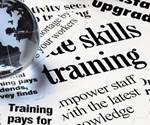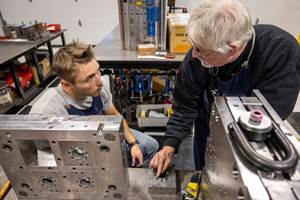Structured Training
Finding, Training & Retaining Employees, Part 2
Once you have implemented some of the strategies discussed in Part 1 of this series (December, 2012 issue), you should be able to find quality, entry-level candidates. Now you need to know how to handle these people once you hire them. So let’s discuss training.
First, I would like to establish the fact that structured training is a proven way to increase retention. So when we are discussing training, we are also discussing higher retention rates. All of the training techniques and ideas suggested will increase the likelihood that the people you have worked so hard to find will stay with your company for the long-haul.
Training is a minute-one strategy. In the first minute a new employee is with your company, he/she is learning. Learning with whom to speak to get information, learning where and how to clock in, learning the layout of the shop, learning where to keep their lunch, learning what their responsibilities are going to be, learning what the moods of their co-workers are like at 6:00 a.m., and on and on.
All of this learning is immediately establishing habits (good or bad) and leaving impressions about the company and its expectations. This learning should not be left to chance. Every company should establish a structured orientation training plan that controls the experience of all new employees.
From the moment every new employee begins their job they should be made to feel like a valuable asset – not like an unfortunate liability. Your new employee should know exactly where to go and who to report to upon arrival on their first day. The person they are looking for does not have to be their direct supervisor. The person they report to should be a person that will greet them with a smile. Maybe it is one of your employees with a particularly positive attitude, or someone from Human Resources. This person can act not only as a trainer on the first day, but also as a mentor throughout their early employment. This mentor should take them around the shop and introduce them to the other employees, give them an in-depth tour and help them begin to feel at home in their new environment.
All of their training should be guided by check-sheets with clearly defined objectives. The check-sheet should include a place for the employee and the trainer to sign-off when they have mastered the task. This could include everything from safety training to learning about company history and who your main customers are. Some examples of first day training objectives could be as follows:
Trainee has demonstrated ability to punch-in properly.
Trainee understands when and where breaks can be taken.
Trainee can describe the primary products and services provided by the company.
Trainee can explain the history of the company.
Trainee has passed the OSHA Overhead Crane certification test.
It is critical that orientation training is controlled and designed to make the new employee feel like a valued team-member. Orientation training may last one or several days, but either way, it should set a very positive tone and high expectations for the weeks, months and years of learning that they are about to embark upon. Give your new employees all the reasons they need to give you the best that they have to offer, right from the start!
Related Content
Leading Mold Manufacturers Share Best Practices for Improving Efficiency
Precise Tooling Solutions, X-Cell Tool and Mold, M&M Tool and Mold, Ameritech Die & Mold, and Cavalier Tool & Manufacturing, sit down for a fast-paced Q&A focused on strategies for improving efficiencies across their operations.
Read MoreHands-on Workshop Teaches Mold Maintenance Process
Intensive workshop teaches the process of mold maintenance to help put an end to the firefighting culture of many toolrooms.
Read MoreEden Tool and Eden Manufacturing: A Story of Resilience, Growth and Innovation
This critical parts manufacturer, founded on solid tooling fundamentals, didn’t get derailed with the unexpected passing of the owner because leadership was already building a solid business, not just a good tool shop. Here’s how they managed change incrementally… and they’re not finished yet.
Read MoreMaking Mentoring Work | MMT Chat Part 2
Three of the TK Mold and Engineering team in Romeo, Michigan join me for Part 2 of this MMT Chat on mentorship by sharing how the AMBA’s Meet a Mentor Program works, lessons learned (and applied) and the way your shop can join this effort.
Read MoreRead Next
Part 1-Finding, Training and Retaining Employees
Before beginning your search, sit with your management team and list the non-machining skills, accomplishments and attributes you know someone must have to be successful at your company.
Read MoreFinding, Training & Retaining Employees
In this multi-part series of articles, contributor Ryan Pohl, a journeyman CNC machinist who also holds a master's degree in industrial training and development, addresses the skilled-labor shortage and its potential to dramatically hinder the future sustainability and growth of the moldmaking industry.
Read MoreReasons to Use Fiber Lasers for Mold Cleaning
Fiber lasers offer a simplicity, speed, control and portability, minimizing mold cleaning risks.
Read More










.jpg;maxWidth=300;quality=90)











